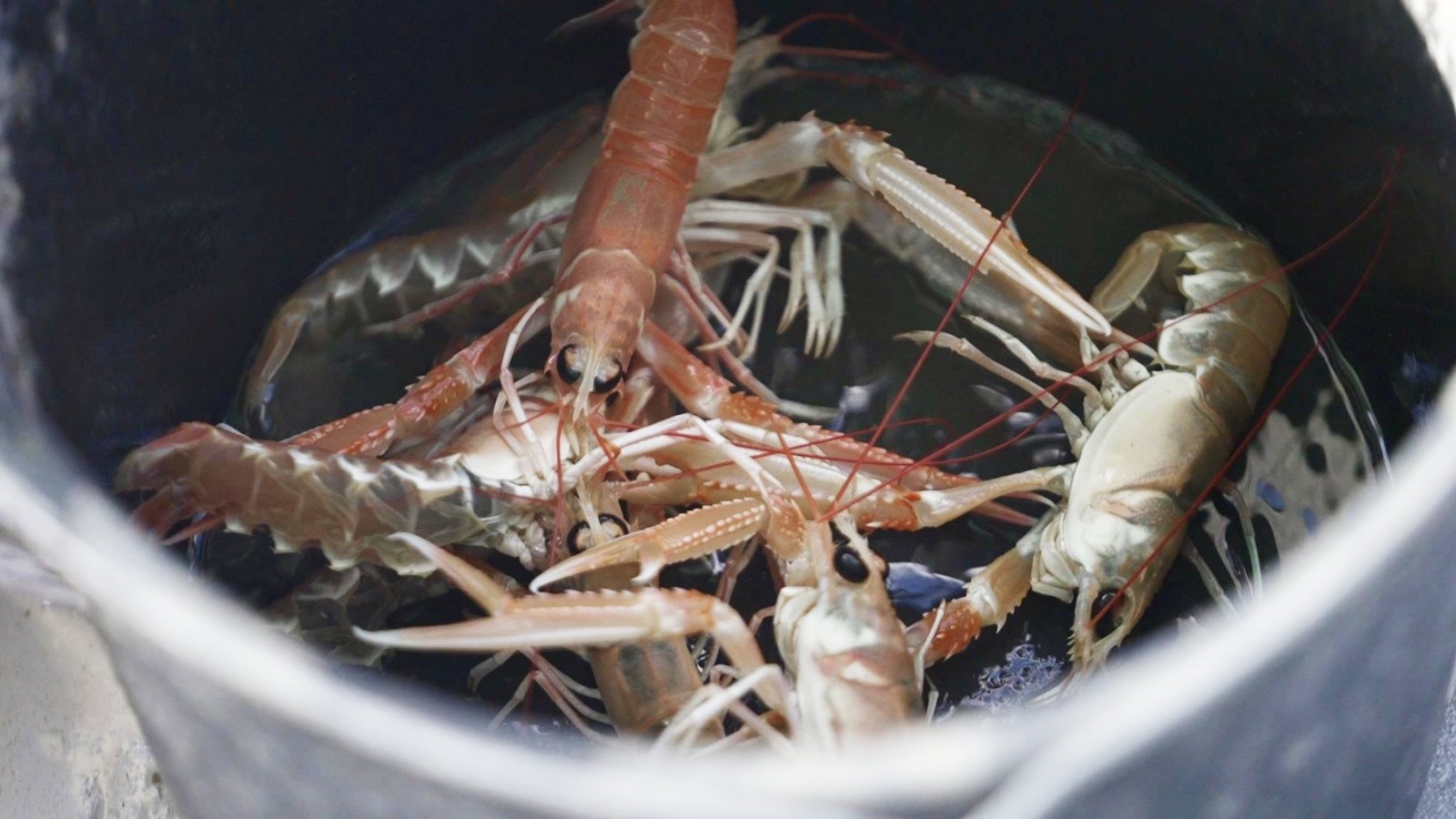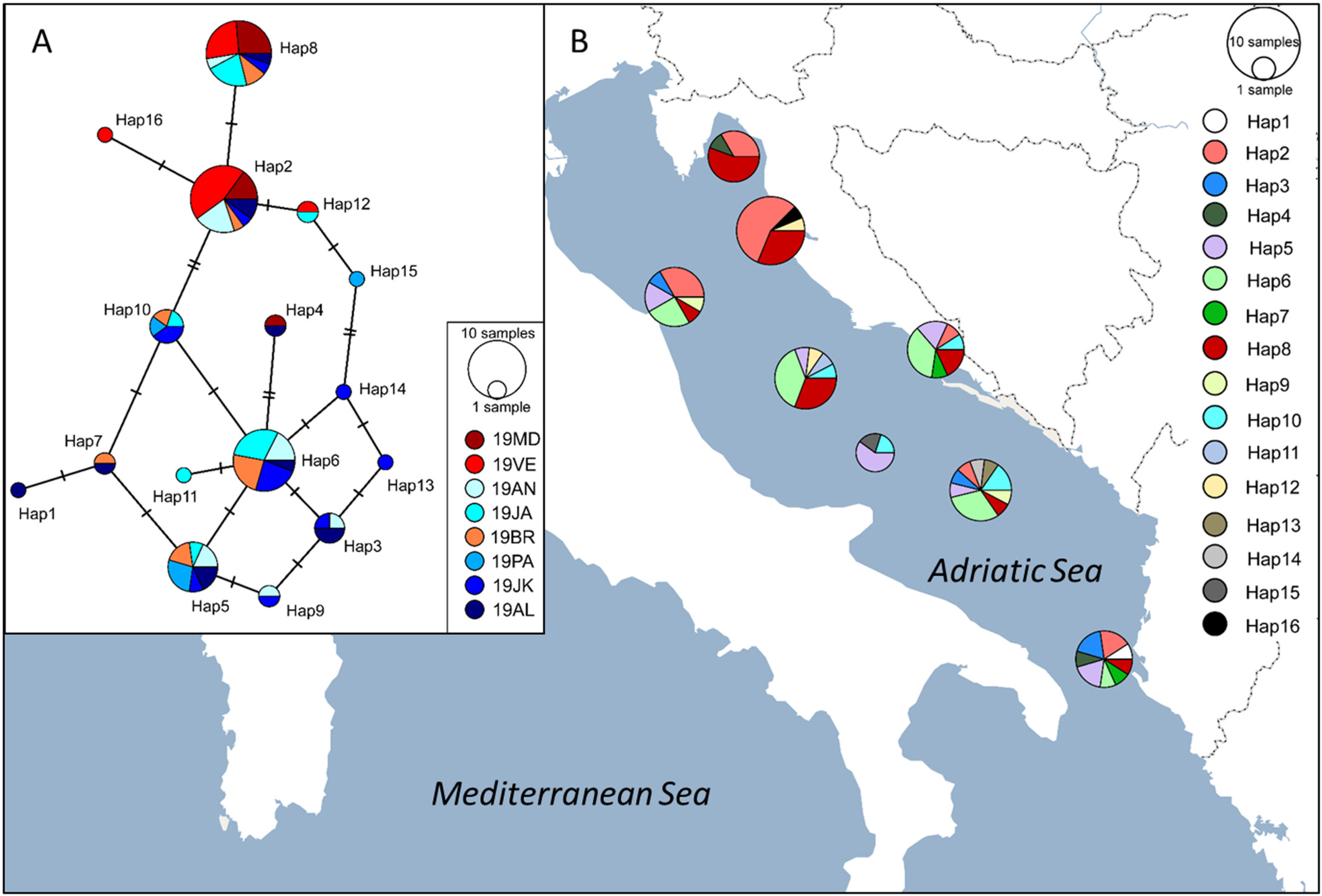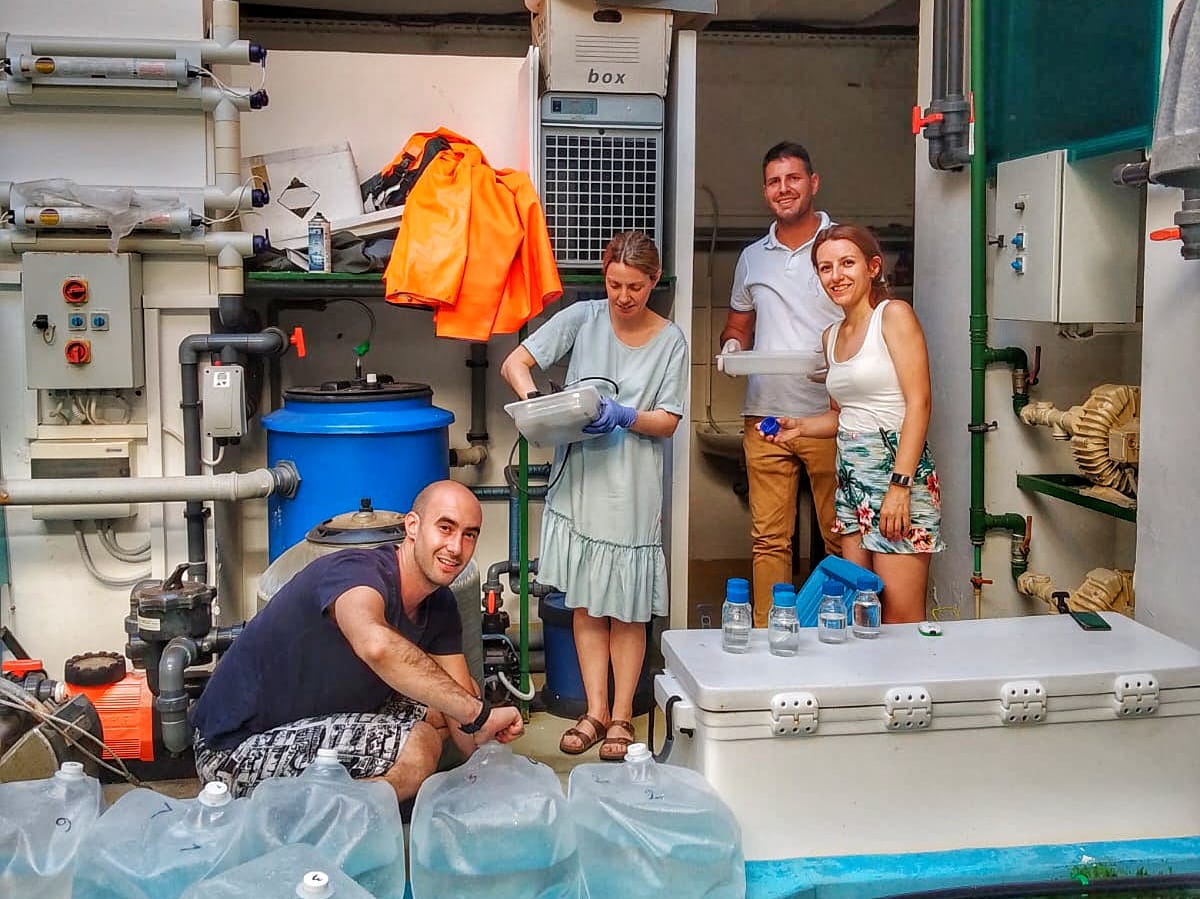Until now, we knew that there are two Norway lobster populations of different densities in the Adriatic, in which the individuals grow at different rates and reach their first sexual maturity.
The area of the Jabuka pit basin is characterized by a dense population of smaller individuals, while the channels of the northern Adriatic are inhabited by larger individuals that reach sexual maturity later. Regardless of these clearly visible differences, they were assumed to be solely the result of environmental factors, and accordingly the Adriatic Norway lobsters were managed as one and the same stock.
In 2015, the EU Commission recommended the accurate identification of the Adriatic Norway lobster stock for better management. Therefore, scientists from our institute started research to describe the genetic structure and history of the population in the Adriatic Sea. The research results were published in the journal Ecology and Evolution.
Studies on genetic diversity show that Norway lobster habitats were fragmented during the Upper Pleistocene, when sea levels dropped. The populations in the Velebit Channel and Kvarner Bay remained isolated from the populations that retreated to the deeper parts of the Adriatic. As the sea level rose, the populations in the southern areas recolonized the open waters of the Adriatic.
The Norway lobster that reproduces in the Jabuka pit basin begins its life cycle as a larva that lives in the sea column and is carried by the currents to remote areas. Due to natural barriers such as islands and reefs, there has always been a smaller influx of larvae from the open sea to the channel areas, which is why there has also been limited gene flow between the open sea populations and the channels of the northern Adriatic.
In addition to the genetic diversity between individuals from the open Adriatic and individuals from the channels of the northern Adriatic (Kvarner, Velebit Channel), the study also revealed greater genetic diversity in individuals from the open Adriatic. The recent ban on fishing activities in the area of Jabuka pit, an important spawning area and habitat for open sea Norway lobsters, speaks in favor of preserving this genetic diversity.
The results of this study indicate that in developing future fisheries management strategies, particular attention must be paid to conserving the isolated populations of coastal Norway lobsters, which are economically very important in this area, as efficiently as possible.






